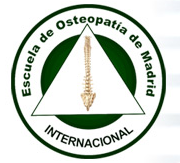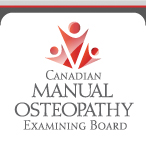a) Observations
To function correctly, the body must be harmonious, balanced, symetrical like it was initially designed by nature. Each anatomical element must be free from its own movements and in the movements linked to the general dynamics. Any lesion, at whatever level, will affect the whole body. The latter must meet the canons of beauty conceptualized by the the ancient Greeks as being the Golden Number and embodied by Apollo who is its most perfect materialisation. In a harmoniously built body, everything is necessarily bound to function well!
It is a harmonious form that determines a harmonious function. Function is regained thanks to the form and not the other way round!!
How can one imagine correct breathing with a distorted thorax ?
Our dyscrasia disrupt our functions and are the cause of more than a disease. A diaphragm blocked during inspiration will for example have a disruptive influence at heart level(angina pectoris) . How many false but later turned true heart-sufferers have fallen victim to a thorax distorted and blocked during inspiration?
Those dyscrasia, those adaption asymmetries are the consequence of muscular tensions or shrinkages which will break the functional balance between the different muscles as regards dynamics and statics … and determine disrupted links between the bones, the articular surfaces, disrupt arterial, venous circulation, compress nervous roots etc. Looking at a patient is sometimes enough to know about the lesions and the tricks he/she uses automatically and unconsciously to avoid pain by taking an antalgic position,being itself at the base of many an illnesses …
At knee level for example, excessive influence of femur in inward rotation accompanied by an excessive influence of tibia in outward rotation, plus adaption of fibula pulled and displaced upwards caused, for example, by a problem of pelvis(ilia - sacrum), cervical vertebrae, shoulder, ankle bone, etc…
In restoring the balance of all the tensions, with a Mézières work, the problems at knee level disappear (patellar syndromes, meniscus problems, lesions of upper end of fibula fixing a tibio-tarsian instability, etc …
b) Adaption mechanism of the musculature
Muscles are mono/polyarticulars arching over one or more articulations. The polyarticulars having many physiologies can adapt easily in case of disruptions, in a physiology by using the other remaining physiologies more intensively, by appealing to help and cooperation of other mono or polyarticular muscles in a mechanism of muscular chains, the ones functioning with the others synergetically .
For example : the semi-membraneous and semi-tendinous, which, if too short, will increase among other things their adduction movements, of internal rotation and flexion, causing even in case of extreme shrinkage a knee recurvature, which is not a laxity, as many people may think … Mono-articular muscles , on the contrary, having no physiology to sustain a situation will be painful more quickly than the polyarticulars.
In addition to that limitation of physiology, the mono-articulars are often situated at junctions called chagrin (e.g.some occipital muscles, some pelvi-trochanterian muscles , the popliteal muscle, etc…) They will have to sustain directly, in their only physiology, the wrong positions of segments strained by important imbalances. They will be easily painful.
The pain is often very far from the place it originates, The cause of the pain and its symptoms shouldn't be confused !! (Problems of cervical pains attributable for example to'an astragalo-calcanean instability)
Hence the absolute obligation of a global treatment and its segmentation. The whole body must be treated in all its components at the same time !
c) Origine of those adaption mechanisms
Our body is organised in such a way that it is not built to sustain the pain. To that purpose, it organises very different adaptive behaviours, either physiologically or statistically. It must retain important dominance such as the standing position and the horizontality of the sight (internal ear balance)
Antalgic reflex à posteriori - Conscious, after trauma, such as a fall or a blow. Our body adopts a less painful position and then "adapts" to the new situation.
Antalgic reflex à priori - Without the knowledge of our conscience, even before pain appears, which the body wants to avoid by adopting a new painless static position.
Visceral origin - Relation between skin (dermatome), viscera (viscerotomes) and muscles (myotomes). For example, cardiac, renal, ovarian problems, etc. will always result in tensions, and with the help of chronicity, shrinkages of the corresponding musculature (see chart of correspondance between viscera and myotomes), the whole accompanied by different multiple pains.
"Psy" Problem : The body posture is always closely linked to "psy" problems . Replacing that body posture by a new static posture will definitely act positively or negatively on the mental behaviour of the Patient.
Sensory problems : Someone with a poor sight, someone with poor hearing will always have a disrupted body pattern and static , imbalanced muscular tensions , important muscular shrinkages.
The list is not exhaustive...
On top of the pathological mechanisms of our distortions another non pathological mechanism of distortions must be added-characteristic adaptations to the'"Homo Erectus" which is THE STANDING POSITION.
The standing position makes us shrink owing to gravity, but mainly to the shrinking action of our musculature, which, having a lower fixed point, drags us continuouly downwards. In addition to this, the adaption of masses (head, thorax, pelvis, knee, etc…) to get a more comfortable, less tiring and more economical balance in which the musculature only intervenes to restore the balance when the centre of gravity tends to come out of the sustentation polygon . Consequently our muscles contract continuously in shrinking position. The length advantage will never return. We keep shrinking and twisting more and more.
The Mézières Method is the only method capable of fighting those mechanisms efficiently and make them disappear for ever !








 11:24
11:24
 Daniel Enriquez de Guevara
Daniel Enriquez de Guevara




























.jpg)






















0 comentarios :
Publicar un comentario